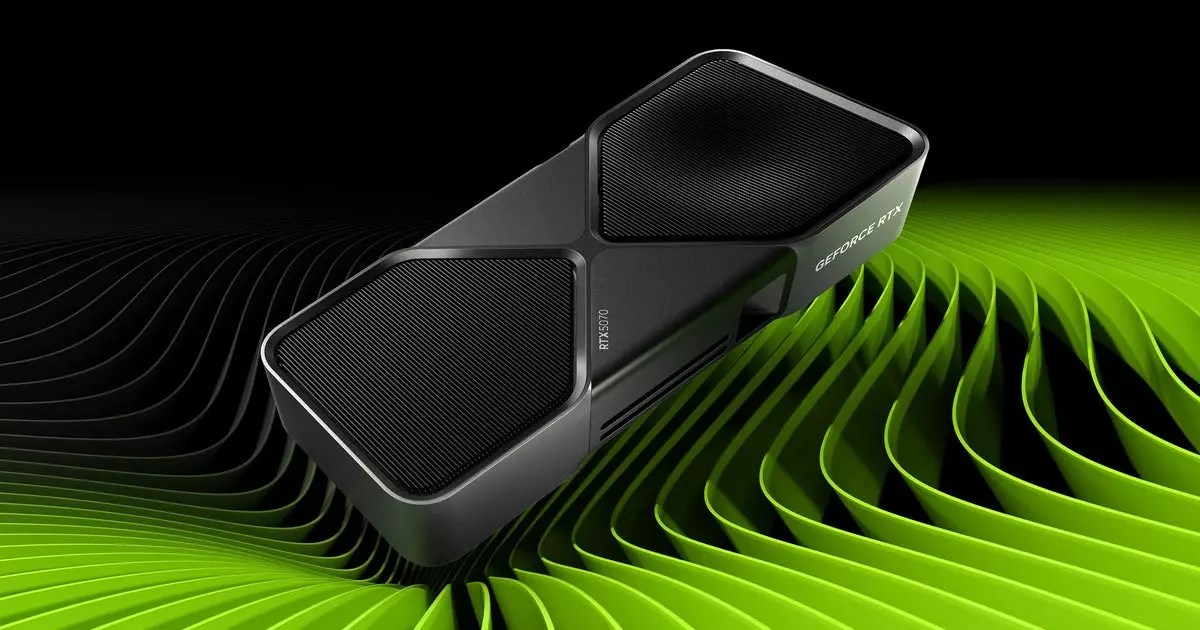Nvidia, a titan in the gaming hardware space, has recently found itself in tumultuous waters with a series of frequent GeForce driver hotfixes. The latest update, GeForce Hotfix Display Driver version 576.26, aims to tackle an array of issues primarily plaguing the newly launched RTX 50 graphics cards. While drivers traditionally represent reliable software support, the current situation reveals a worrying trend: an unusual frequency of patches that suggests deeper underlying issues with the RTX 50 series.
Typically, driver hotfixes are rare interventions, appearing only when absolutely necessary. However, Nvidia’s recent approach has been to roll out updates approximately every two weeks, raising eyebrows in the gaming community. The rapid fire of hotfixes, from resolving a Valorant startup issue in driver 572.24 to addressing significant problems like screen flickering in popular titles such as Black Myth: Wukong and Forza Horizon 5, paints a picture of inconsistency. It’s not merely the individual problems that warrant concern, but the larger narrative of instability that these updates evoke.
Community Concerns and Developer Responsibility
Diving into the patch notes, it becomes evident that the core issue predominantly affects the RTX 50 series. While some players, like myself, may not experience these issues firsthand, the sheer volume of complaints echoing through forums tells a different story. Nvidia’s own community threads reveal users grappling with ongoing problems related to their GPUs, particularly after the introduction of what was supposed to be a ‘stable’ driver—version 576.02. This version served as a crucial pillar for new hardware, yet it has since been targeted as a potential breaking point for many.
This leads to a pressing question: Is it fair for Nvidia to shoulder the blame for the volatility of their drivers? True, the competitive nature of the industry often pressures developers to release timely updates in support of new hardware and gaming experiences. Yet, this has always been a reality within the tech arena, and the sudden surge in hotfixes feels like an alarm bell for the RTX 50 series.
Hotfixes or Band-Aids?
Some might argue that these hotfixes could be a knee-jerk response to a complex problem within the software’s framework. It’s important to consider whether Nvidia is using quick patches as a stopgap solution rather than addressing the root causes of instability. If frequent hotfixes continue at this pace, they risk diminishing confidence in their software reliability and ultimately, the trust of their user base.
As an industry leader, Nvidia bears significant responsibilities, including the impact of their software on gaming experiences. While I have personally found the RTX 50 cards capable yet inconsistent in performance, unresolved issues may taint the reputation of an otherwise powerful series. If you’re a GeForce user faced with persistent difficulties, downloading version 576.26 may be your best bet, albeit with the risk of needing another fix sooner rather than later.
The capability for cloud applications to revolutionize user experiences is undeniable, yet it’s essential that underlying software issues receive adequate attention. As gaming technology rapidly evolves, Nvidia must ensure that their software not only keeps up but delivers uncompromising stability to meet the demands of an increasingly discerning audience. The future hinges on their ability to navigate this rough patch with a long-term commitment to excellence.


Leave a Reply